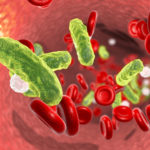 Sepsis is a life-threatening condition that arises when the body’s response to infection injures its own tissues and organs. Common signs and symptoms include fever, increased heart rate, increased breathing rate, and confusion. Sepsis is a rare condition that can look just like flu, gastroenteritis or a chest infection.
Sepsis is a life-threatening condition that arises when the body’s response to infection injures its own tissues and organs. Common signs and symptoms include fever, increased heart rate, increased breathing rate, and confusion. Sepsis is a rare condition that can look just like flu, gastroenteritis or a chest infection.
There are around 123,000 cases of sepsis a year in England. Around 44,000 people die every year as a result of Sepsis. Every three and a half seconds someone dies of Sepsis.
Anyone can develop sepsis after an injury or minor infection, although some people are more vulnerable. Sepsis is also the biggest direct cause of death in UK pregnancies.
People most at risk of sepsis include those:
– with a medical condition or receiving medical treatment that weakens their immune system
– who are already in hospital with a serious illness
– who are very young or very old
– and those who have just had surgery or who have wounds or injuries as a result of an accident
Although sepsis is often referred to as either blood poisoning or septicaemia these terms refer to the invasion of bacteria into the bloodstream. Sepsis can affect multiple organs or the entire body even without blood poisoning or septicaemia. Sepsis can also be caused by viral or fungal infections although bacterial infections are by far the most common cause.
Severe sepsis and septic shock are medical emergencies. If you think you or someone in your care has one of these conditions go straight to A&E or call 999.
The UK Sepsis trust has come up with a useful pneumonic for sepsis:
S – Slurred Speech
E – Extreme shivering or muscle pain
P – Passing no urine in a day
S – Severe breathlessness
I – I feel like I might die
S – Skin mottled or discoloured.
If you see any of these you should seek urgent medical help.
The NHS advice is to go straight to A&E or call 999 if a child:
– looks mottled, bluish or pale
– is very lethargic or difficult to wake
– feels abnormally cold to touch
– is breathing very fast
– has a rash that does not fade when you press it
– or finally, has a fit or convulsion.
Sepsis symptoms in older children and adults may include:
– a high temperature (fever) or low body temperature
– chills and shivering
– a fast heartbeat
– fast breathing.
In some cases, symptoms of more severe sepsis or septic shock when your blood pressure drops to a dangerously low level can include:
– feeling dizzy or faint
– a change in mental state – such as confusion or disorientation
– diarrhoea
– nausea and vomiting
– slurred speech
– severe muscle pain
– severe breathlessness
– less urine production than normal – for example, not urinating for a day
– cold, clammy and pale or mottled skin
– loss of consciousness.
Sepsis is often diagnosed based on simple measurements such as your temperature, heart rate and breathing rate. A blood test may be required. Other tests can help determine the type of infection where it’s located and which body functions have been affected.
If sepsis is detected early and hasn’t affected vital organs yet, it may be possible to treat the infection at home with antibiotics. Most people who have sepsis detected at this stage make a full recovery.
Almost all people with severe sepsis and septic shock require admission to hospital. Some people may require admission to an intensive care unit (ICU).
Because of problems with vital organs, people with severe sepsis are likely to be very ill and the condition can be fatal. However, sepsis is treatable if it is identified and treated quickly and in most cases leads to a full recovery with no lasting problems.
You can find more about sepsis on the UK Sepsis Trust website at www.sepsistrust.org
For more information on First Aid training courses visit ProTrainings website.
